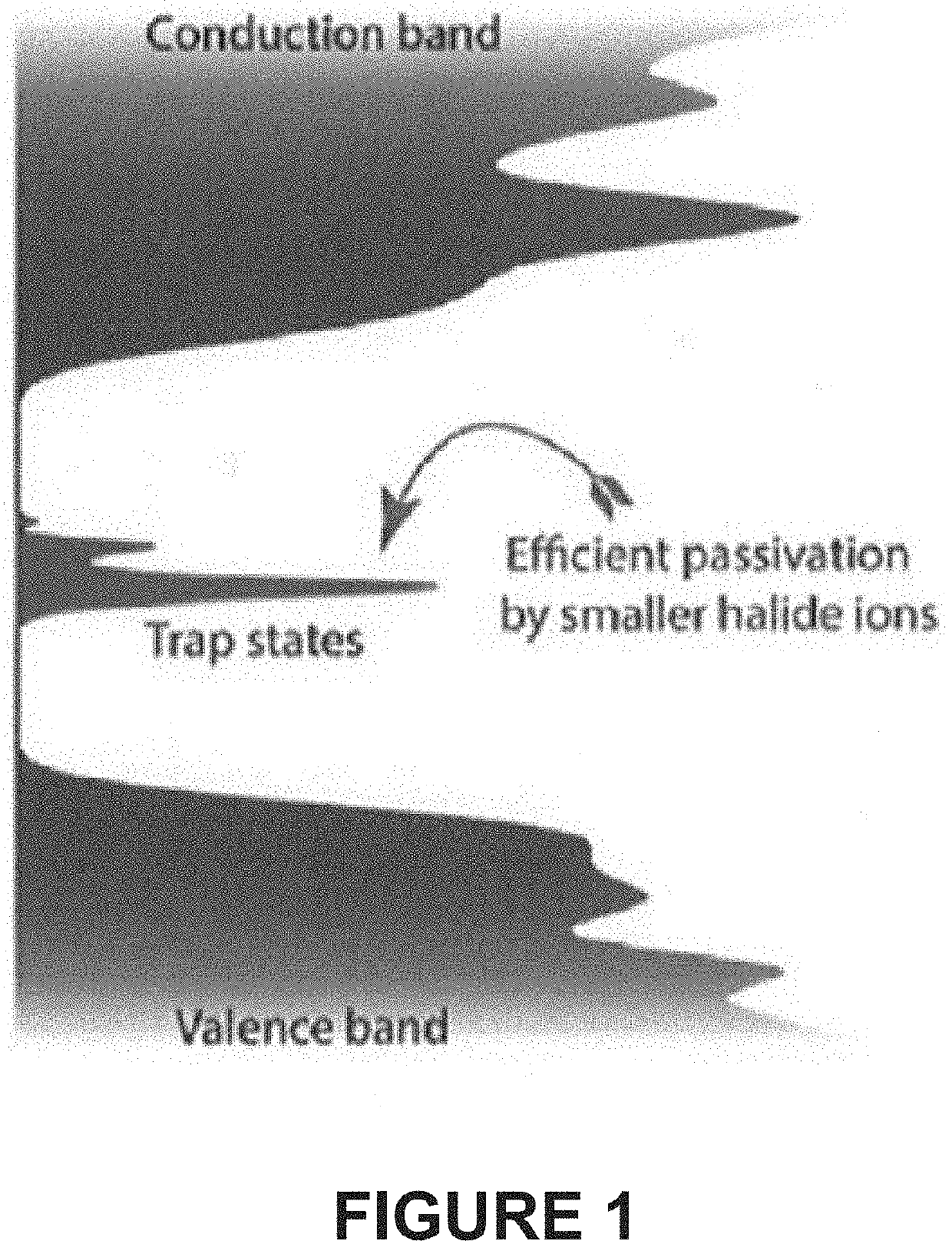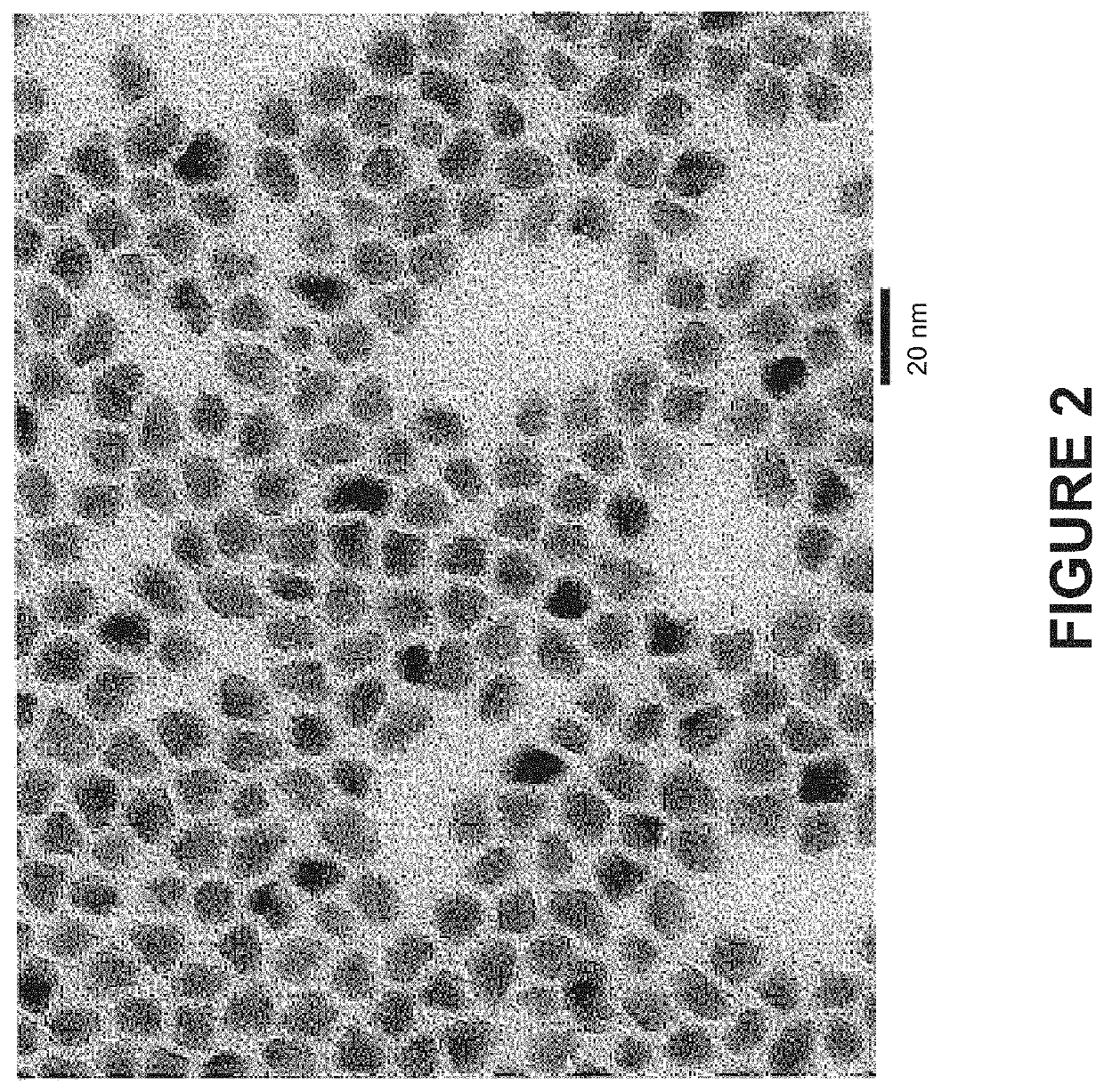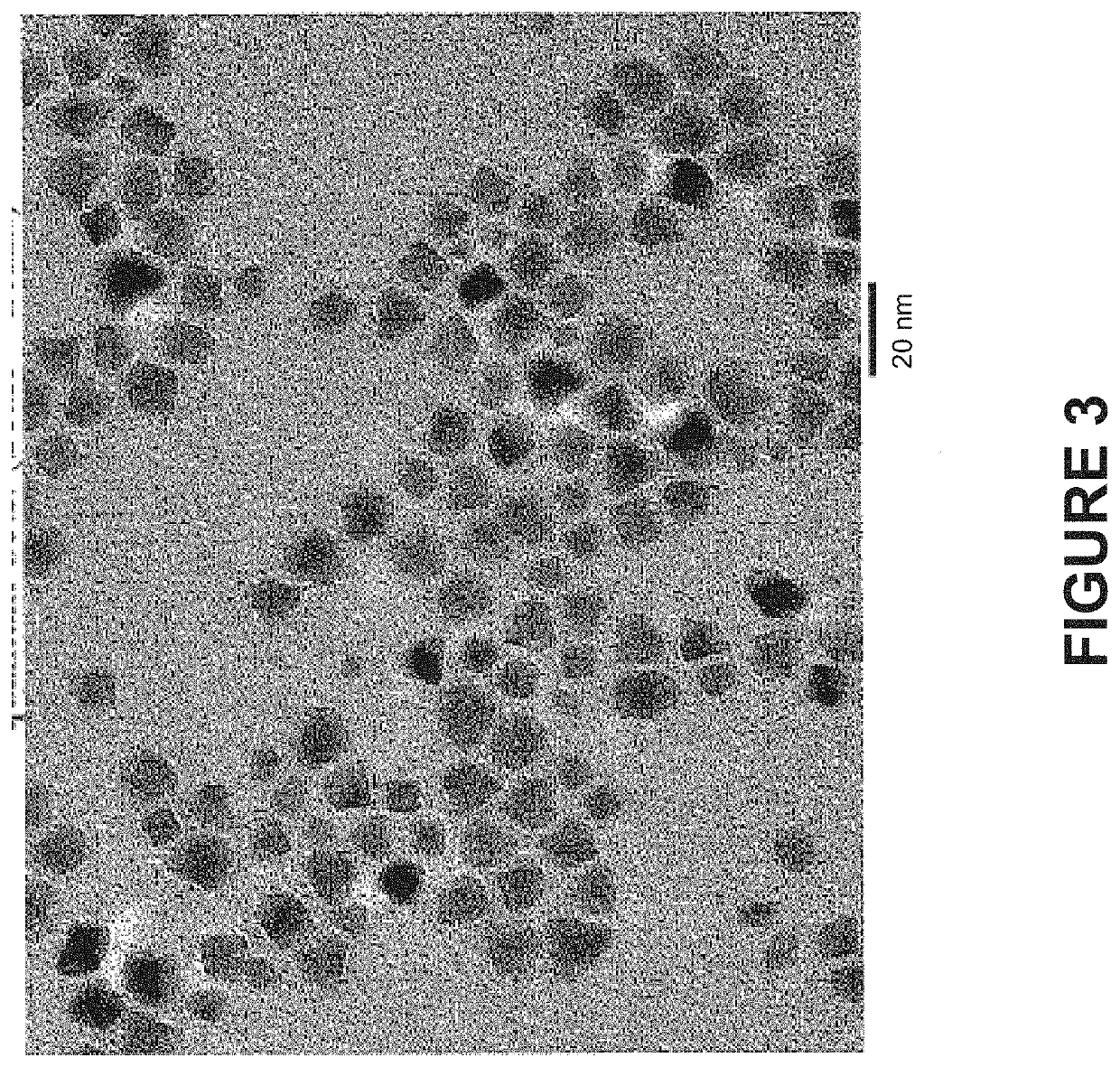Blue-emitting nanocrystals with cubic shape and fluoride passivation
a nanocrystal and fluoride technology, applied in the field of nanotechnology, can solve the problems of insufficient ligand coverage on the surface, pits and kinks of rounded particle surfaces, difficult to passivate with ligands, and rise in operating voltage and irreversible electrochemical degradation
- Summary
- Abstract
- Description
- Claims
- Application Information
AI Technical Summary
Benefits of technology
Problems solved by technology
Method used
Image
Examples
example 1
[0370]Synthesis of ZnSe1-xTex Alloy Nanocrystals Using TOPTe Precursor
[0371]Preparation of TOPTe precursor: the Te precursor mixture was prepared by first diluting trioctylphosphine telluride (1 M Te, 230 μL) with 2.5 mL dried and distilled oleylamine. Lithium triethylborohydride (1 M in THF, 230 μL) was added to this solution which resulted in a deeply purple solution. Finally, zinc oleate (0.5 M in trioctylphosphine (TOP), 460 μL) was added which resulted in a colorless opaque viscous gel which could be drawn into a syringe.
[0372]Oleylamine (15 mL) was added to a 100 mL three neck flask and degassed under vacuum at 110° C. for 30 minutes. Then the mixture was heated to 300° C. under nitrogen flow. Once this temperature was reached, a solution of trioctylphosphine selenide (TOPSe, 2.7 mmol) and diphenylphosphine (225 μL) in TOP (2.9 mL total) was added to the flask. Once the temperature rebounded to 300° C., the TOPTe precursor described above and a solution of diethyl zinc (295 μL...
example 2
Synthesis of ZnSe Nanocrystals
[0373]ZnSe nanocrystals were prepared using the method of Example 1 without the injection of the TOPTe precursor.
example 3
[0374]Synthesis of ZnSe1-xTex / ZnSe Buffered Nanocrystals
[0375]A ZnSe buffer layer on ZnSe1-xTex nanocrystals of 4.0 nm average diameter with a target shell thickness of 4 monolayers (ML) ZnSe was prepared.
[0376]A 100 mL three neck flask was charged with zinc oleate (6.23 g), lauric acid (3.96 g), trioctylphosphine oxide (4.66 g), and TOP (9.4 mL). The flask was subjected to three vacuum and nitrogen backfill cycles before heating to 100° C. and degassing for 30 minutes. The reaction mixture was placed under a blanket of nitrogen and a solution of ZnSe1-xTex cores (4.0 mL, 28.0 mg / mL in hexane) mixed with TOPSe (1.8 mL of 0.3 M selenium in TOP) was added to the flask. The flask was evacuated for 2 minutes and then heated to 310° C. under nitrogen flow. Once this temperature was reached, the slow infusion of TOPSe (10.4 mL, 0.3 M in TOP) with a rate of 0.325 mL / min was started. After the selenium infusion was finished, the reaction was held at 310° C. for 10 minutes and then cooled to...
PUM
| Property | Measurement | Unit |
|---|---|---|
| molar ratio | aaaaa | aaaaa |
| photoluminescence quantum yield | aaaaa | aaaaa |
| photoluminescence quantum yield | aaaaa | aaaaa |
Abstract
Description
Claims
Application Information
 Login to View More
Login to View More - R&D
- Intellectual Property
- Life Sciences
- Materials
- Tech Scout
- Unparalleled Data Quality
- Higher Quality Content
- 60% Fewer Hallucinations
Browse by: Latest US Patents, China's latest patents, Technical Efficacy Thesaurus, Application Domain, Technology Topic, Popular Technical Reports.
© 2025 PatSnap. All rights reserved.Legal|Privacy policy|Modern Slavery Act Transparency Statement|Sitemap|About US| Contact US: help@patsnap.com



